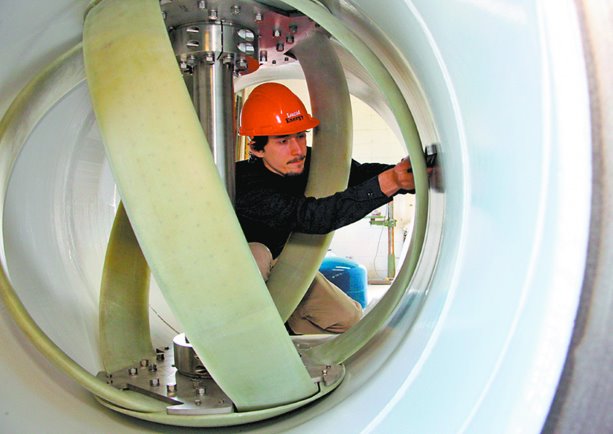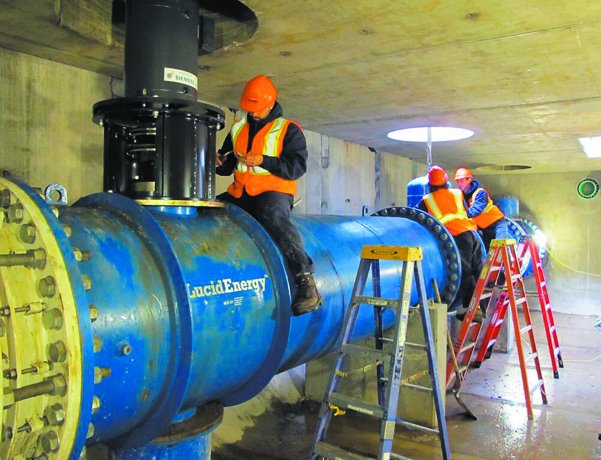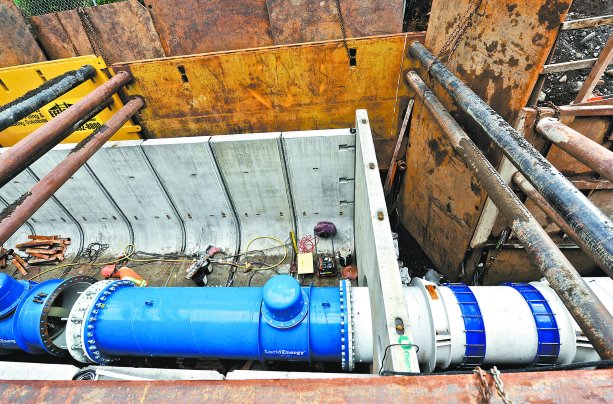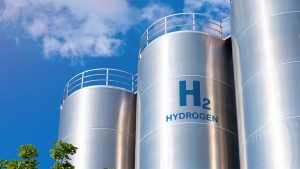A new take on an old idea has been developed as the industrial world continues its scramble for more and more clean energy.
The old idea is called run-of-river hydroelectric generation. In its simplest form, a turbine is immersed in a river current to drive a shore-based generator. Usually, though, a channel is dug to stream water into the turbine. A pond is often created at the upstream end to guarantee flow in times of low water. The new idea is to install turbines in a watermain to drive generators perched atop the pipe.
It’s the same idea, but everything is enclosed. The water flow is constant, and there is no threat to fish or other aquatic life.
"Water and energy are very closely connected," says Gregg Semler, whose Lucid Energy Inc., devised the in-pipe system.
Lucid’s gravity system does what a run-of-river facility would do. But, says Semler, we’re doing it with no environmental impact."
He said in an interview that it was the insight of some scientists that led to the development of the in-pipe system.
"They took their insight to Northwest Pipe, the largest (steel) pipe company in the United States, and the CEO there really liked the idea."
With Northwest on board as both an investor and fabricator, "we were able to co-develop our system and we were able then to find a customer who was interested in energy efficiency."
The rest, he said, was just "one step at a time."
Those steps eventually led to the installation of a length of pipe containing four turbines in a major water pipeline in Portland, Ore., where Lucid is based. The system came on-stream early this year, and began operating at full capacity early this month.
The Portland system uses 42-inch turbines mounted four diameters apart in a single length of steel pipe. Its rated capacity is 200kW, and will generate an average of 1,100 MWh of energy per year, enough to power about 150 homes.
The system was installed at no cost to the city of Portland or its water utility. It was financed by private capital, and will generate about $2 million worth of renewable energy capacity during the 20-year life of a power purchase agreement signed with the city. After 20 years, the city water board will be able to own the system, and all the energy in produces.
Electricity generated by the Lucid system can be used by the water utility to reduce maintenance and operating costs, or it can be fed into the local grid to generate revenue.
The alliance between the local water and electrical utilities is natural.
"Water and energy are very closely connected, Semler said. "It takes an enormous amount of energy to deliver safe, clean drinking water, and an enormous amount of water to produce electricity."
Lucid’s system is relatively quick and easy to install because the pipe arrives at the job site with the turbines and generators already installed. Then a length of existing pipe is removed and Lucid’s pipe replaces it.
The systems are usually installed upstream of pressure-reducing valves. They convert a small amount of excess head pressure into electricity without impairing water delivery or quality, and without environmental impact.
Semler has a simplified explanation of what the system does.
"All we’re doing," he said, "is recapturing energy that exists inside these pipelines."
It may sound simple, but the steps leading up to the launch of the Portland facility took a long time to achieve.
The first Lucid system was launched in 2010 as a pilot project in Riverside, Calif. There were three pilot projects in all, utilizing succeeding generations of the system. Then, in 2012, the first commercial installation was completed, also in Riverside.
Now, on the heels of the Portland installation, Lucid has signed up for a joint-venture collaboration to use its system to create power for the Arizona & California Railroad. The collaboration will be a component in a local water conservation, recovery and storage project.
That project will involve a 43-mile water conveyance pipeline in which Lucid will install turbines and generators to help meet the railway’s electrical needs.
Lucid’s turbines can be mounted in standard 600, 1,000 and 1,500mm steel pipes, but Semler said the company is working on developing smaller turbines for use in the smaller pipe diameters found in neighbourhoods. And while that work is under way, the company is promoting its system in other major cities and industrial markets.
Semler said he is talking with a large water agency in Quebec, as well as cities across Canada. Lucid has a Canadian agent, Opsis, Solutions Écoénergétiques, in Longueil, Que., in the Montreal area.

1/2
Photo:




Recent Comments
comments for this post are closed